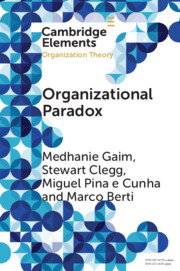Element contents
Organizational Paradox
Published online by Cambridge University Press: 13 September 2022
Summary
- Type
- Element
- Information
- Series: Elements in Organization TheoryOnline ISBN: 9781009128155Publisher: Cambridge University PressPrint publication: 22 September 2022
References
- 5
- Cited by



